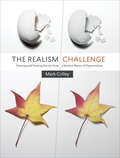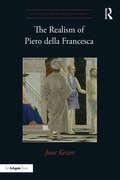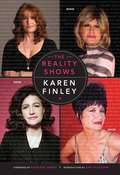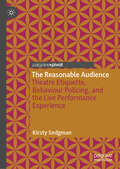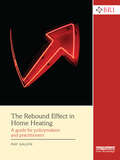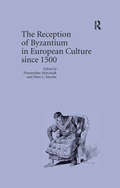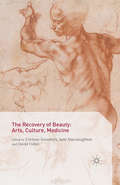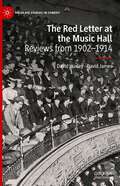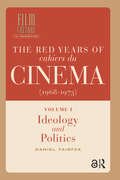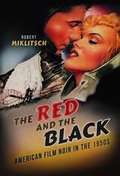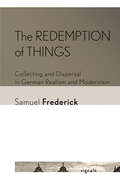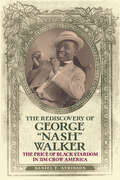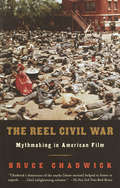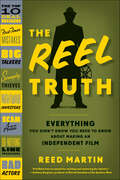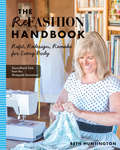- Table View
- List View
The Realism Challenge
by Mark CrilleyA captivating, step-by-step guide that teaches artists to draw and paint exact duplicates of common objects, rendered in the trompe l'oeil, hyperrealistic style of artist Mark Crilley's popular YouTube video series. Are You Up to the Challenge? With just watercolors, colored pencils, and white gouache, artist Mark Crilley takes you step-by-step through his process for producing stunning, hyperrealistic recreations of everyday items. Based on Crilley's mega-popular "Realism Challenge" YouTube videos, The Realism Challenge contains thirty lessons demonstrating how to render mirror-like duplicates in the trompe l'oeil tradition of everything from shells, leaves, and candy bars to your very own still life arrangements. Each lesson builds off the previous one, as you'll master essential artistic techniques like creating drop shadows, adding highlights, and building from light to dark. Learn the secrets of one of hyperrealism's biggest stars. Come take . . . The Realism Challenge!From the Trade Paperback edition.n master in order to conquer The Realism Challenge.
The Realism of Piero della Francesca: Life And Work (Visual Culture in Early Modernity)
by Joost KeizerThe fifteenth-century Italian artist Piero della Francesca painted a familiar world. Roads wind through hilly landscapes, run past farms, sheds, barns, and villages. This is the world in which Piero lived. At the same time, Piero’s paintings depict a world that is distant. The subjects of his pictures are often Christian and that means that their setting is the Holy Land, a place Piero had never visited. The Realism of Piero della Francesca studies this paradoxical aspect of Piero’s art. It tells the story of an artist who could think of the local churches, palaces, and landscapes in and around his hometown of Sansepolcro as miraculously built replicas of the monuments of Jerusalem. Piero’s application of perspective, to which he devoted a long treatise, was meant to convince his contemporaries that his paintings report on things that Piero actually observed. Piero’s methodical way of painting seems to have offered no room for his own fantasy. His art looks deliberately styleless. This book uncovers a world in which painting needed to validate itself by cultivating the illusion that it reported on things observed instead of things imagined by the artist. Piero’s painting claimed truth in a world of increasing uncertainties.
The Realisms of Berenice Abbott: Documentary Photography and Political Action
by Terri WeissmanThe Realisms of Berenice Abbott provides the first in-depth consideration of the work of photographer Berenice Abbott. Though best known for her 1930s documentary images of New York City, this book examines a broad range of Abbott's work--including portraits from the 1920s, little known and uncompleted projects from the 1930s, and experimental science photography from the 1950s. It argues that Abbott consistently relied on realism as the theoretical armature for her work, even as her understanding of that term changed over time and in relation to specific historical circumstances. But as Weissman demonstrates, Abbott's unflinching commitment to "realist" aesthetics led her to develop a critical theory of documentary that recognizes the complexity of representation without excluding or obscuring a connection between art and engagement in the political public sphere. In telling Abbott's story, The Realisms of Berenice Abbott reveals insights into the politics and social context of documentary production and presents a thoughtful analysis of why documentary remains a compelling artistic strategy today.
The Reality Shows
by Ann Pellegrini Karen Finley Kathleen Hanna"Ms. Finley hasn't lost the power to disturb."-Ben Brantley, The New York TimesNo other contemporary performing artist has captured the psychological complexity of this decade's political and social milestones as Karen Finley has in the past ten years. In her inimitable style, Finley has embodied some of the most troubling figures to cast a long shadow on the public imagination, and has envisioned a kind of catharsis within each drama: Liza Minnelli responds to the September 11 attacks; Terri Schaivo explains why Americans love a woman in a coma; Martha Stewart dumps George W. Bush during their tryst on the eve of the Republican National Convention; Silda Spitzer tells the former governor why "I'm sorry" just isn't enough; Jackie O cries, "Please stop looking at me!"The Reality Shows is a revelation of a decade by one of our greatest interpreters of popular and political culture.Karen Finley's raw and transgressive performances have long provoked controversy and debate. She has appeared and exhibited her visual art, performances, and plays internationally. The author of many books, including A Different Kind Of Intimacy, George & Martha, and Shock Treatment, she is a professor at the Tisch School of Art and Public Policy at NYU.Kathleen Hanna, activist and writer, was the lead singer of the punk band Bikini Kill before fronting the dance-punk band Le Tigre. She released a solo album under the name Julie Ruin.
The Reason to Sing: A Guide to Acting While Singing
by Craig CarneliaIn The Reason to Sing, renowned composer-lyricist and teacher Craig Carnelia provides musical actors with a step-by-step guide to making their singing performances more truthful, vivid, and full of life. Using a technique developed over decades of teaching the professional community of Broadway actors and students alike, The Reason to Sing utilizes detailed descriptions of sessions the author has had with his notable students and lays out a new and proven approach to help you build your skills, your confidence, and your career. This book is intended for musical theater acting students as well as working professionals and teachers of the craft.
The Reasonable Audience: Theatre Etiquette, Behaviour Policing, And The Live Performance Experience
by Kirsty SedgmanAudiences are not what they used to be. Munching crisps or snapping selfies, chatting loudly or charging phones onstage – bad behaviour in theatre is apparently on the rise. And lately some spectators have begun to fight back…The Reasonable Audience explores the recent trend of ‘theatre etiquette’: an audience-led crusade to bring ‘manners and respect’ back to the auditorium. This comes at a time when, around the world, arts institutions are working to balance the traditional pleasures of receptive quietness with the need to foster more inclusive experiences. Through investigating the rhetorics of morality underpinning both sides of the argument, this book examines how models of 'good' and 'bad' spectatorship are constructed and legitimised. Is theatre etiquette actually snobbish? Are audiences really more selfish? Who gets to decide what counts as ‘reasonable’ within public space?Using theatre etiquette to explore wider issues of social participation, cultural exclusion, and the politics of identity, Kirsty Sedgman asks what it means to police the behaviour of others.
The Rebound Effect in Home Heating: A guide for policymakers and practitioners (Building Research and Information)
by Ray GalvinThis is a definitive guide to the rebound effect in home heating – the increase in energy service use after a technological intervention aimed at reducing consumption. It sets out what the effect is, how it plays out in the home heating sector, what this implies for energy saving initiatives in this sector, and how it relates to rebound effects in other sectors. The book outlines how the concept of the rebound effect has been developed and the scope of research on it, both generally and particularly in the home heating sector. Within the context of energy and CO2 emissions policy, it summarises the empirical evidence, exploring its causes and the attempts that are being made to mitigate it. Various definitions of the rebound effect are considered, in particular the idea of the effect as an energy-efficiency ‘elasticity’. The book shows how this definition can be rigorously applied to thermal retrofits, and to national consumption data, to give logically consistent rebound effect results that can be coherently compared with those of other sectors, and allow policy makers to have more confidence in the predictions about potential energy savings.
The Reception of Ancient Egypt in Venice, 1400-1800: Travelers, Adventurers, and Collectors
by Sabine HerrmannThis book examines for the first time how ancient Egypt is reflected in early modern Venetian sources. As a center of the printing industry, Venice was an important hub for the accumulation and dissemination of direct information on the Near East and the Levant. Therefore, ancient Egypt played a significant role in the cultural memory of Venice due to the lagoon city’s religious and mercantile orientation towards the East. The book explores how the acquisition, selection, and interpretation of Egyptian objects took shape in Venice, and which actors were involved in the circulation of knowledge about ancient Egypt. Venice can be used as a lens through which to understand the reception of ancient Egypt in the early modern period. Meaningful and partly unpublished sources from primarily Italian archives highlight the visual imagination of ancient Egypt and its lexicographical codification. The author draws upon these sources to examine the Venetian image of ancient Egypt in the early modern period and the epistemic change that accompanied it.
The Reception of Byzantium in European Culture since 1500
by Przemyslaw Marciniak Dion C. SmytheStudies on the reception of the classical tradition are an indispensable part of classical studies. Understanding the importance of ancient civilization means also studying how it was used subsequently. This kind of approach is still relatively rare in the field of Byzantine Studies. This volume, which is the result of the range of interests in (mostly) non-English-speaking research communities, takes an important step to filling this gap by investigating the place and dimensions of ’Byzantium after Byzantium’. This collection of essays uses the idea of ’reception-theory’ and expands it to show how European societies after Byzantium have responded to both the reality, and the idea of Byzantine Civilisation. The authors discuss various forms of Byzantine influence in the post-Byzantine world from architecture to literature to music to the place of Byzantium in modern political debates (e.g. in Russia). The intentional focus of the present volume is on those aspects of Byzantine reception less well-known to English-reading audiences, which accounts for the inclusion of Bulgarian, Czech, Polish and Russian perspectives. As a result this book shows that although so-called 'Byzantinism' is a pan-European phenomenon, it is made manifest in local/national versions. The volume brings together specialists from various countries, mainly Byzantinists, whose works focus not only on Byzantine Studies (that is history, literature and culture of the Byzantine Empire), but also on the influence of Byzantine culture on the world after the Fall of Constantinople.
The Reception of the Printed Image in the Fifteenth and Sixteenth Centuries: Multiplied and Modified (Routledge Research in Art History)
by Grażyna JurkowlaniecThis book examines the early development of the graphic arts from the perspectives of material things, human actors and immaterial representations while broadening the geographic field of inquiry to Central Europe and the British Isles and considering the reception of the prints on other continents. The role of human actors proves particularly prominent, i.e. the circumstances that informed creators’, producers’, owners’ and beholders’ motivations and responses. Certainly, such a complex relationship between things, people and images is not an exclusive feature of the pre-modern period’s print cultures. However, the rise of printmaking challenged some established rules in the arts and visual realms and thus provides a fruitful point of departure for further study of the development of the various functions and responses to printed images in the sixteenth century. The book will be of interest to scholars working in art history, print history, book history and European studies. The introduction of this book is freely available as a downloadable Open Access PDF under a Creative Commons Attribution-Non Commercial-No Derivatives 4.0 license at https://www.taylorfrancis.com/chapters/oa-edit/10.4324/9781003029199-1/introduction-gra%C5%BCyna-jurkowlaniec-magdalena-herman?context=ubx&refId=b6a86646-c9f3-490d-8a06-2946acd75fda
The Recording Machine: Art and Fact during the Cold War
by Joshua ShannonA revealing look at the irrevocable change in art during the 1960s and its relationship to the modern culture of fact This refreshing and erudite book offers a new understanding of the transformation of photography and the visual arts around 1968. Author Joshua Shannon reveals an oddly stringent realism in the period, tracing artists’ rejection of essential truths in favor of surface appearances. Dubbing this tendency factualism, Shannon illuminates not only the Cold War’s preoccupation with data but also the rise of a pervasive culture of fact. Focusing on the United States and West Germany, where photodocumentary traditions intersected with 1960s politics, Shannon investigates a broad variety of art, ranging from conceptual photography and earthworks to photorealist painting and abstraction. He looks closely at art by Bernd and Hilla Becher, Robert Bechtle, Vija Celmins, Douglas Huebler, Gerhard Richter, and others. These artists explored fact’s role as a modern paradigm for talking, thinking, and knowing. Their art, Shannon concludes, helps to explain both the ambivalent anti-humanism of today’s avant-garde art and our own culture of fact.
The Recovery of Beauty: Arts, Culture, Medicine
by David Fuller Corinne SaundersAn interdisciplinary collection of essays exploring the complex and conflicted topic of beauty in cultural, arts and medicine, looking back through the long cultural history of beauty, and asking whether it is possible to 'recover beauty'.
The Recovery of Natural Environments in Architecture: Air, Comfort and Climate (Building Research and Information)
by C. Alan ShortThe Recovery of Natural Environments in Architecture challenges the modern practice of sealing up and mechanically cooling public scaled buildings in whichever climate and environment they are located. This book unravels the extremely complex history of understanding and perception of air, bad air, miasmas, airborne pathogens, beneficial thermal conditions, ideal climates and climate determinism. It uncovers inventive and entirely viable attempts to design large buildings, hospitals, theatres and academic buildings through the 19th and early 20th centuries, which use the configuration of the building itself and a shrewd understanding of the natural physics of airflow and fluid dynamics to make good, comfortable interior spaces. In exhuming these ideas and reinforcing them with contemporary scientific insight, the book proposes a recovery of the lost art and science of making naturally conditioned buildings.
The Red Letter at the Music Hall: Reviews from 1902–1914 (Palgrave Studies in Comedy)
by David James David HuxleyThis book reprints and analyses reviews of music hall acts from the family magazine The Red Letter, which was published by the Scottish based firm D C Thomson from 1899 to 1987. The articles under review range in date from 1902 to 1914, covering theatres all over Britain and acts from around the world. The reviews are uniquely detailed and shed light not only on the early acts of comics who would later go on to achieve wider fame, such as Will Hay and Robb Wilton, but also reveal the acts of long forgotten performers. These so-called ‘wines and spirits’ acts—acts that would never top the bill but who nevertheless toured the halls, sometimes for years on end, such as female impersonator Albert Letine, comedy magician Chris van Bern and female stand up Anna Dorothy amongst many others—deserve to be remembered every bit as much as the top of the bill acts. The articles are arranged in sections, covering race, gender, character comedy, physical comedy, male comedy and specialty or ‘spesh’ acts. The reviews reveal not only the contents of the acts but also the audience reactions to those acts and prevailing contemporary Edwardian attitudes. The articles are accompanied by their original illustrations, some of which are unique and, like the articles themselves, unseen for over a century.
The Red Man's Bones: George Catlin, Artist and Showman
by Benita EislerThe first biography in over sixty years of a great American artist whose paintings are more famous than the man who made them. George Catlin has been called the "first artist of the West," as none before him lived among and painted the Native American tribes of the Northern Plains. After a false start as a painter of miniatures, Catlin found his calling: to fix the image of a "vanishing race" before their "extermination"--his word--by a government greedy for their lands. In the first six years of the 1830s, he created over six hundred portraits--unforgettable likenesses of individual chiefs, warriors, braves, squaws, and children belonging to more than thirty tribes living along the upper Missouri River. Political forces thwarted Catlin's ambition to sell what he called his "Indian Gallery" as a national collection, and in 1840 the artist began three decades of self-imposed exile abroad. For a time, his exhibitions and writings made him the most celebrated American expatriate in London and Paris. He was toasted by Queen Victoria and breakfasted with King Louis-Philippe, who created a special gallery in the Louvre to show his pictures. But when he started to tour "live" troupes of Ojibbewa and Iowa, Catlin and his fortunes declined: He changed from artist to showman, and from advocate to exploiter of his native performers. Tragedy and loss engulfed both. This brilliant and humane portrait brings to life George Catlin and his Indian subjects for our own time. An American original, he still personifies the artist as a figure of controversy, torn by conflicting demands of art and success.
The Red Years of Cahiers du cinéma: Volume I, Ideology and Politics (Film Culture in Transition)
by Daniel FairfaxThe uprising which shook France in May 1968 also had a revolutionary effect on the country's most prominent film journal. Under editors Jean-Louis Comolli and Jean Narboni, Cahiers du cinéma embarked on a militant turn that would govern the journal's work over the next five years. Inspired by Marxist and psychoanalytic theory, the red years of Cahiers du cinéma produced a theoretical outpouring that was seminal for the formation of film studies and is still of vital relevance for the contemporary audiovisual landscape. The Red Years of Cahiers du Cinéma (1968-1973) gives an overview of this period in the journal's history and its aftermath, combining biographical accounts of the critics who wrote for Cahiers in the post 1968 period with theoretical explorations of their key texts..
The Red Years of Cahiers du cinéma: Volume II, Aesthetics and Ontology (Film Culture in Transition)
by Daniel FairfaxThe uprising which shook France in May 1968 also had a revolutionary effect on the country's most prominent film journal. Under editors Jean-Louis Comolli and Jean Narboni, Cahiers du cinéma embarked on a militant turn that would govern the journal's work over the next five years. Inspired by Marxist and psychoanalytic theory, the red years of Cahiers du cinéma produced a theoretical outpouring that was seminal for the formation of film studies and is still of vital relevance for the contemporary audiovisual landscape. The Red Years of Cahiers du Cinéma (1968-1973) gives an overview of this period in the journal's history and its aftermath, combining biographical accounts of the critics who wrote for Cahiers in the post 1968 period with theoretical explorations of their key texts..
The Red and the Black: American Film Noir in the 1950s
by Robert MiklitschCritical wisdom has it that we said a long goodbye to film noir in the 1950s. Robert Miklitsch begs to differ. Pursuing leads down the back streets and alleyways of cultural history, The Red and the Black proposes that the received rise-and-fall narrative about the genre radically undervalues the formal and thematic complexity of '50s noir and the dynamic segue it effected between the spectacular expressionism of '40s noir and early, modernist neo-noir. Mixing scholarship with a fan's devotion to the crooked roads of critique, Miklitsch autopsies marquee films like D.O.A., Niagara, and Kiss Me Deadly plus a number of lesser-known classics. Throughout, he addresses the social and technological factors that dealt deuce after deuce to the genre--its celebrated style threatened by new media and technologies such as TV and 3-D, color and widescreen, its born losers replaced like zombies by All-American heroes, the nation rocked by the red menace and nightmares of nuclear annihilation. But against all odds, the author argues, inventive filmmakers continued to make formally daring and socially compelling pictures that remain surprisingly, startlingly alive. Cutting-edge and entertaining, The Red and the Black reconsiders a lost period in the history of American movies.
The Red and the Blacklist: The Intimate Memoir of a Hollywood Expatriate
by Norma BarzmanThe horrors of the McCarthy era.
The Redemption of Things: Collecting and Dispersal in German Realism and Modernism (Signale: Modern German Letters, Cultures, and Thought)
by Samuel FrederickCollecting is usually understood as an activity that bestows permanence, unity, and meaning on otherwise scattered and ephemeral objects. In The Redemption of Things, Samuel Frederick emphasizes that to collect things, however, always entails displacing, immobilizing, and potentially disfiguring them, too. He argues that the dispersal of objects, seemingly antithetical to the collector's task, is essential to the logic of gathering and preservation. Through analyses of collecting as a dialectical process of preservation and loss, The Redemption of Things illustrates this paradox by focusing on objects that challenge notions of collectability: ephemera, detritus, and trivialities such as moss, junk, paper scraps, dust, scent, and the transitory moment. In meticulous close readings of works by Gotthelf, Stifter, Keller, Rilke, Glauser, and Frisch, and by examining an experimental film by Oskar Fischinger, Frederick reveals how the difficulties posed by these fleeting, fragile, and forsaken objects help to reconceptualize collecting as a poetic activity that makes the world of scattered things uniquely palpable and knowable.
The Rediscovery of George "Nash" Walker: The Price of Black Stardom in Jim Crow America
by Daniel E. AtkinsonThe first biography of George Walker, a uniquely Afro-American tale of innovation and triumph despite the odds; the story of an underdog with a bite!The Rediscovery of George "Nash" Walker is the first biography dedicated to the life and cultural contributions of this actor, writer, and producer who revolutionized Black American theatre during the early twentieth century. In 1892, Walker left his hometown with a medicine show and quickly formed a partnership with comedian Bert Williams that would last nearly eighteen years. Under the moniker of "The Two Real Coons," Williams and Walker used their comedy to erode the stereotyped White image of minstrel-style "cooning." Their theatrical company produced many popular plays, including Clorindy/A Lucky Coon (1899–1900), Policy Players (1900–1901), Sons of Ham (1901–1902), In Dahomey (1902–1905), Abyssinia (1905–1906), Bandanna Land (1907–1909), and Mr. Lode of Koal (1909–1910), even performing on Broadway and abroad. An activist at heart, Walker insisted that audiences receive carefully curated Black entertainment, told from a uniquely Afro-American perspective. Unfortunately, Walker contracted syphilis and was forced to retire in 1909, marking the end of the first golden age of Black theatre. Despite his landmark contributions, Walker's story has been largely forgotten. Drawing on archival resources, newspaper accounts, memoirs, oral histories, and manifestos written by Walker, this book celebrates the accomplishments of the vanguard generation of Black artists who were active between the close of the Civil War and the start of World War I.
The Reel Civil War: Mythmaking in American Film
by Bruce ChadwickArguing that film consistently distorts and sanitizes the past, Chadwick (history and film, Rutgers U.) details the distortions and myths purveyed by film from the KKK to the 1993 film in which actor Richard Gere plays a former slave-owner who is miraculously transformed into a populist who heroically drives off the KKK from a racially integrated community. For the bulk of film's history, myths have portrayed a myth of the underdog Southerner and demeaned African Americans, but new "politically correct," yet still sanitized, versions have begun to crop up in Hollywood productions. In the end, Chadwick seems to believe, despite changes in the treatment of the Civil war on screen, the "reel" still fails to be "real." Annotation c. Book News, Inc., Portland, OR (booknews.com)
The Reel Truth: Everything You Didn't Know You Need to Know About Making an Independent Film
by Reed MartinDid you know that most of the biggest indie filmmakers, screenwriters, and producers working today each made the same avoidable mistakes early on in their careers?The Reel Truth details the pitfalls, snares, and roadblocks that aspiring filmmakers encounter. Reed Martin interviewed more than one hundred luminaries from the independent film world to discuss the near misses that almost derailed their first and second films and identify the close shaves that could have cut their careers short. Other books may tell you the best way to make your independent film or online short, but no other book describes so candidly how to spot and avoid such issues and obstacles as equipment problems, shooting-day snafus, postproduction myths, theatrical distribution deal breakers, and dozens of other commonly made missteps, including the top fifty mistakes every filmmaker makes.From personal experience and his years as a freelance reporter covering independent film for USA Today and Filmmaker magazine, Martin uncovers the truth about the risks and potential rewards that go with chasing celluloid glory. Whether you're writing a screenplay, looking for financing, about to start shooting, or thinking about investing time and money (or someone else's money) in an independent film, The Reel Truth is a must-read.
The Refashion Handbook: Refit, Redesign, Remake for Every Body
by Beth HuntingtonTake secondhand finds from frumpy to fabulous with this guide by the Renegade Seamstress featuring resizing techniques and 19 refashioning projects.With her award-winning blog, The Renegade Seamstress, Beth Huntington combines two of her favorite activities—thrifting and sewing—into the art of refashioning. In The Refashion Handbook, she shares 19 stylish projects, each showing you how to transform easy-to-find items into a better fit, a new design, or a radical makeover. Learn the basics of refashioning: how to measure, reshape, fit, and finish a garment, so it fits you perfectly. Plus size? Petite? No problem! Beth's designs flatter a wide variety of sizes and body types. Her easy techniques are perfect for beginners and even experienced sewists will appreciated her clever tips and tricks.
The Reflective Museum Practitioner: Expanding Practice in Science Museums
by Laura W. Martin Lynn Uyen Tran Doris B. AshThe Reflective Museum Practitioner explores a range of expansive and creative ways in which the concept of “reflective practice” has been applied in the informal STEM (science, technology, engineering, and mathematics) learning environments of museums and zoos. It seeks to demonstrate how such a process can inspire lifelong learning in practitioners, to the benefit of practitioners and visitors alike. Presenting six projects that employed reflective practice, the contributors examine how each project has encouraged and sustained reflection, and the outcomes thereof. The projects cover a wide range of different practitioners—including administrators, scientists, educators, and other front-line and back-room staff—who work at different junctures of their organizations. Collectively, they raise key questions about changing communities of practice in Informal Science Learning institutions. The projects and concept of “reflective practice” are fully defined and contextualized by the editors, who offer in-depth analysis, along with a cultural-historical activity theory framework, for understanding how changes in museum practice unfold in an institutional context. The Reflective Museum Practitioner offers museum professionals insight into “reflective practice,” as practiced by other institutions in their sector, providing practical examples that can be adapted to their needs. It will also be of interest to scholars and students focusing on science museums, or professional practice development in museums.
